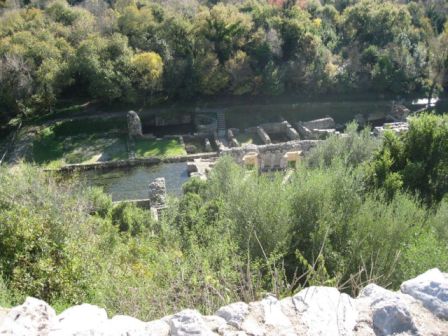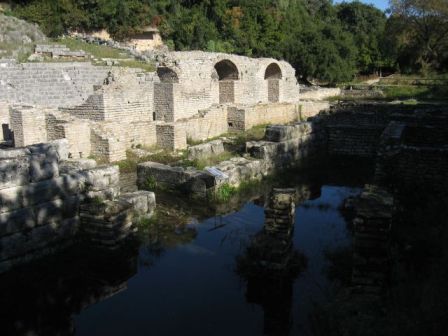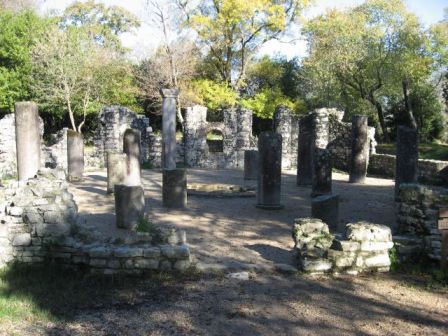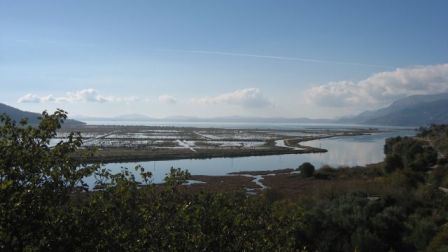Butrint is a National Archaeology Park about 30-45 minutes south of Saranda. It became a UNESCO World Hertiage site in 1992, a national park in 2001 and a Ramsar Wetland Site of International Importance in 2003. It has one of best self guided trails and visitor brochure we have seen.

From Saranda, once you get by the taxi drivers, it is easy to catch the bus. The taxi drivers want 10€ ($13) to go to Butrint and 20€ ($26) to return. Or you can take the bus that runs hourly for 100lek ($1) each way. Now in summer, the convenience of an air-conditioned car or a pressing time schedule might justify the taxi fee, but for us in off-season, this was an easy decision. We spent the day there, had lunch on the mountaintop and got back to town around 3pm with plenty of time remaining to wander through the rest of the city.
It is a great place to visit, but the trip from Durrës makes it a challenge. You spend end up spending 2 full days traveling to and from the site and only a half-day at the site. It might be better to visit Butrint from Greece.
A Summary of the History and Sites
The earliest settlement evidence dates back to the 8th Century BCE, but it was not until healing sanctuary for the god Asclepius was built in the 4th Century BCE that significant development took place. During this period the theatre was constructed and the settlement was enclosed by fortified walls.

With the occupation by the Roman Empire, extensive expansion occurred and the city was extended by a bridge and aqueduct across the river to the plain. By the 6th Century, Christianity spread to Butrint and it became a seat of a bishopric. In this period, the Baptistery and the Great Basilica were built.

In the 13th Century, Butrint was refortified and bought by the Venetians. It was used as a military outpost for the next 400 years. It was prized for its fish, forest and cattle, but now, the forest are gone. In the 18th Century, Ali Pasha, an effective but ruthless ruler, used the site to entertain foreign diplomats and grand tourists.

Excavations began in the 1920’s and are continuing today.
There are additional pictures in the gallery, but several websites document the area better than my blog, so I will just provide the links to them.
The Butrint Foundation http://www.butrintfound.dial.pipex.com/
UNESCO Site http://whc.unesco.org/sites/570.htm